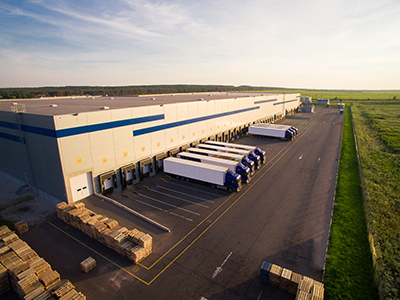March 15th, 2022
This Isn’t Happening!
The dream is always the same. You’ve established your FBA sales on Amazon and they are climbing. You’re keeping FBA inventory stocked, and the checks are deposited into your account. The market conditions are right, demand is there, and you’re making all the right moves in line with the algorithm gods. You’re winning in the momentum game and your product is ranking well in the Best Sellers Rank (BSR) and in search results.
And then for some inexplicable reason, you forget to send inventory to Amazon. The words “Currently Out of Stock” or “Currently Unavailable” appear on your listing. Sales flatline. Competitors, who are keeping FBA inventory stocked, take the opportunity to undercut you and siphon off your customers by getting favorable reviews, optimizing their listings, and boosting their ranking and conversion rates. You scramble to send in your inventory but you must now rebuild momentum from scratch.
You missed one little obligation and you’ve seemingly lost the faith of your marketplace. The cream has soured; the dream has become a nightmare.
Common Mistakes That Can Lead to Out of Stock FBA Inventory
When your inventory runs dry, you may think to yourself, “Where did I go wrong? What did I do to get myself into this mess?” Generally speaking, there are two primary mistakes that send sellers on the dreaded path toward having FBA inventory out of stock.
1. Inventory “Auto-Pilot”
With FBA, sellers are no longer required to maintain and manage their local inventory. Instead, they simply send off their product to a fulfillment center and Amazon handles the rest, including shipping-related customer service and returns.
While this convenience is often a wonderful tool for FBA sellers, it can be detrimental to the success of your business if you allow yourself to become passive in your inventory management. A “set it and forget it” mindset can be tempting for sellers, but it can lead to many mistakes and miscalculations.
The FBA market is fluid, which means that your sales velocity, number of competitors and sales margins are in a constant state of change. Even with Amazon doing much of the heavy lifting in terms of inventory, in order to be successful, you must pay attention to these shifts and find effective ways to respond accordingly.
As your business grows, your inventory will require more active management. You’ll need to make decisions like when, what and how much of an ASIN to stock or restock. The truth is, successful businesses are deeply familiar with their inventory needs, even if fulfillment is handled by Amazon.
2. Understocking
When it comes to inventory, there is one ever present challenge – optimization. Overstocking can tie up your funds and result in unnecessary Amazon warehousing fees. On the flip side, understocking can lead to those dreaded out of stock FBA inventory and result in a loss of sales and customer satisfaction.
 The Consequences of Out of Stock Inventory
The Consequences of Out of Stock Inventory
Amazon is different from other online marketplaces in two important ways:
Products are purchased, shipped and delivered at lightning speed
Amazon relies heavily on seller and product rankings
These two factors are the reason that out of stock inventory can be especially hazardous for Amazon sellers. When a seller does run out of FBA inventory, these factors often lead to three primary problems:
- Missed Sales & Income
For the sake of argument, let’s say that you operate your own ecommerce website. If you run out of stock for a certain product, you can put that item on backorder and fulfill the order once it is restocked. Because Amazon promises its customers lightning-fast order fulfillment, it does not allow sellers to accept orders for backordered items. This means that your sales come to a screeching halt if your stock goes to zero.
- A Drop in Product Ranking
If you are out of stock frequently or for an extended period of time, this will eventually have a negative impact on your Amazon search results. Amazon’s algorithm uses several factors, many of which are still unknown to sellers, when deciding how to deliver search results to its customers.
One thing we do know is that product availability plays a large role. If your product is out of stock, chances are it will not show up in search results at all. After repeated offenses, your product will be bumped down in results, even after your item is back in stock. Sellers with little competition may not be affected by this drop in rankings. However, for highly competitive products this change could have an enormous impact on sales.
- No New Reviews
No stock equates to no sales. No sales mean that no new customers can write reviews for your products. It’s that simple. While it may be easy to overlook the importance of acquiring new reviews, they are actually critical to your business. New reviews can attract new customers and boost your sales rankings which, if you are suffering from a drop in rankings due to frequent stock outs, can be an invaluable asset.
How to Recover from Not Keeping FBA Inventory Stocked
If the above stock out scenario is a reality for you (and not just a bad dream), know this: recovery is entirely possible but it may take time. How long it will take depends on the uniqueness of your product and how quickly you can re-establish a track record for doing all things well, especially keeping FBA inventory stocked. It will take patience.
If you find yourself in this situation, remember:
- You will have to deal with all of the usual processes that eat up time when stocking FBA: calculating, picking, labeling, prepping, packing, shipping, and waiting on Amazon processing.
- Each new sale is an opportunity to climb again in Amazon’s rankings; hopefully, you have not lost your thirst of the momentum game (by keeping FBA inventory stocked).
- Amazon's Sponsored Products campaigns, or some similar promotion or discount can help you to recover more quickly from failure at keeping FBA inventory stocked.
- You are not the only one that ever experienced a hiccup in your efforts at keeping FBA inventory stocked on Amazon; it happens to almost all sellers eventually.
- If nothing else, you will learn something about the true demand of your product based on how well your Amazon sales rebound after restocking (you can monitor your overall daily sessions and your “Unit Session Percentage” to see if you have lost ground to competitors in regard to rates of conversion) and re-establishing some record of consistency in keeping FBA inventory stocked.
And most importantly, you will have learned that keeping FBA inventory stocked is no “little obligation.”
If you have made the mistake of running out of inventory and have made a successful recovery, the last thing you want to do is run the risk of another stock out. You know first hand the negative effect having out of stock FBA inventory can have on your business and how tough it can be to recover. Here are a few tips to help protect yourself from running out of stock again:
- Rely on the sales trends – Keep a close watch on the sales of your products. What are your sales on an average day? During what time of year do you sell the most product? When do your sales tend to dry up? All of this is crucial to calculating how much inventory to send to Amazon and when
- Overstocking is usually better than understocking – Whatever you estimate as your “typical” sales for the season, send that amount plus 20%. Yes, you run the risk of your inventory sitting in a fulfillment center and incurring warehousing fees, but the costs of that are nothing compared to those of running out of inventory.
- Keep your eye on the prize – This goes back to what we discussed earlier about inventory “auto-pilot.” If you slack off on the above calculations and run into another inventory stock out, you’ll be kicking yourself. We understand that your business is demanding. If you are too busy to monitor your inventory yourself, hire someone to do it or talk to a member of our Amazon Consulting team. You will be glad you did.
- Sales and inventory management software – Using software can help you identify sales trends, take into account sales velocity and give you restock recommendations.
- Amazon inventory tools – Amazon also has their own tool for recommending what and how much inventory to restock under the Inventory Management section of Seller Central. If you choose to use this tool, be careful not to rely on it alone. We say this because sometimes, if an item is out of stock for long enough, Amazon will eventually no longer recommend restocking.
Keep the Bad Dream at Bay
Ideally, you will never have to encounter FBA inventory being out of stock. To maintain your Amazon sales mojo:
- Be aware that things can turn on a dime; do not slip into complacency
- Understand that your customer base is never steady; know how to guard against losing them
- When forecasting proper inventory levels, anticipate and consider sales trends, fads and seasonal spikes, and create a hedge by sending in a few more items than you calculated the need for
- Monitor and monitor some more or, if you are able to, consider inventory management software to automate the process of keeping FBA inventory stocked
Overall, the way to avoid the nightmare is by monitoring and being vigilant in keeping FBA inventory stocked on Amazon. But if you accidentally stock out, there may be ways to recover effectively. We're here to help. Schedule your free consultation today!

 The Consequences of Out of Stock Inventory
The Consequences of Out of Stock Inventory